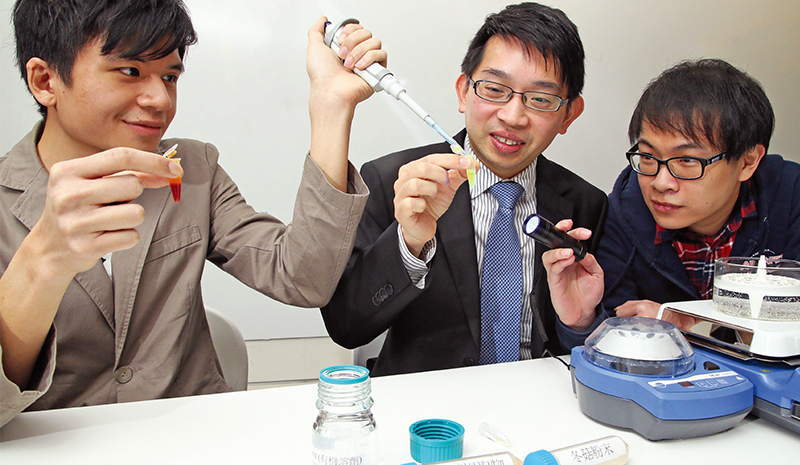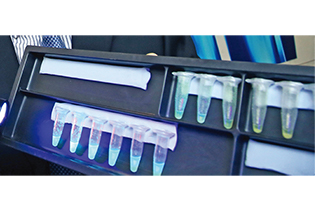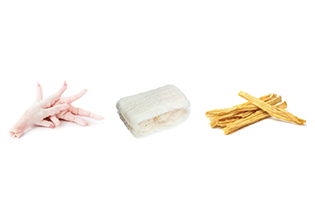
Dr Wong Man-kin (middle) and his research team use fluorescent probes to detect formaldehyde in food.
A highly selective visual detection method developed at PolyU can test 10 food samples in one go within one hour.
In recent years, formaldehyde has been illegally used in food processing for bleaching and preservation, arousing health concerns among the general public. Soya bean sticks, mung bean vermicelli, hydrated tripe and chicken feet, etc., are at most risk. Large-amount ingestion can cause vomiting, coma, renal injury and possible death. There is also some concern about the carcinogenicity of formaldehyde in humans. Problematically, the compound is colourless and difficult to detect in food.
In view of this, Dr Wong Man-kin and his research team at the Department of Applied Biology and Chemical Technology, in collaboration with the Guangdong Entry-Exit Inspection and Quarantine Bureau, developed fluorescent probes for the rapid detection of formaldehyde in food.
Traditional methods of measuring formaldehyde levels require expensive instruments, sophisticated operational skills, tedious sample preparation and time-consuming analysis but are limited by their low sensitivity, rendering them unsuitable for on-site food safety inspection.
This innovative technology puts the chemical coupling of amine-functionalised resins, formaldehyde and fluorescent dyes via gold catalysis to good use, enabling the fluorescent probes to detect formaldehyde in food with high selectivity and stability. After chemical bonding, the resins surface will turn fluorescent blue under hand-held ultraviolet light. Hence, inspectors can easily detect the formaldehyde concentration by observing brightness of the fluorescent colour with naked eyes. Not requiring expensive instruments or complicated operation, this invention can test 10 food samples in one go within an hour, making it an ideal solution for on-site food safety inspection and frontline quality control.
This probing technology has passed the initial review for a China patent. The related paper was published in Organic & Biomolecular Chemistry, a leading journal in organic chemistry. Looking ahead, the research team will continue to enhance the formaldehyde detection method by developing a new class of tunable fluorescent dyes and high throughput rapid detection formats. ♦


